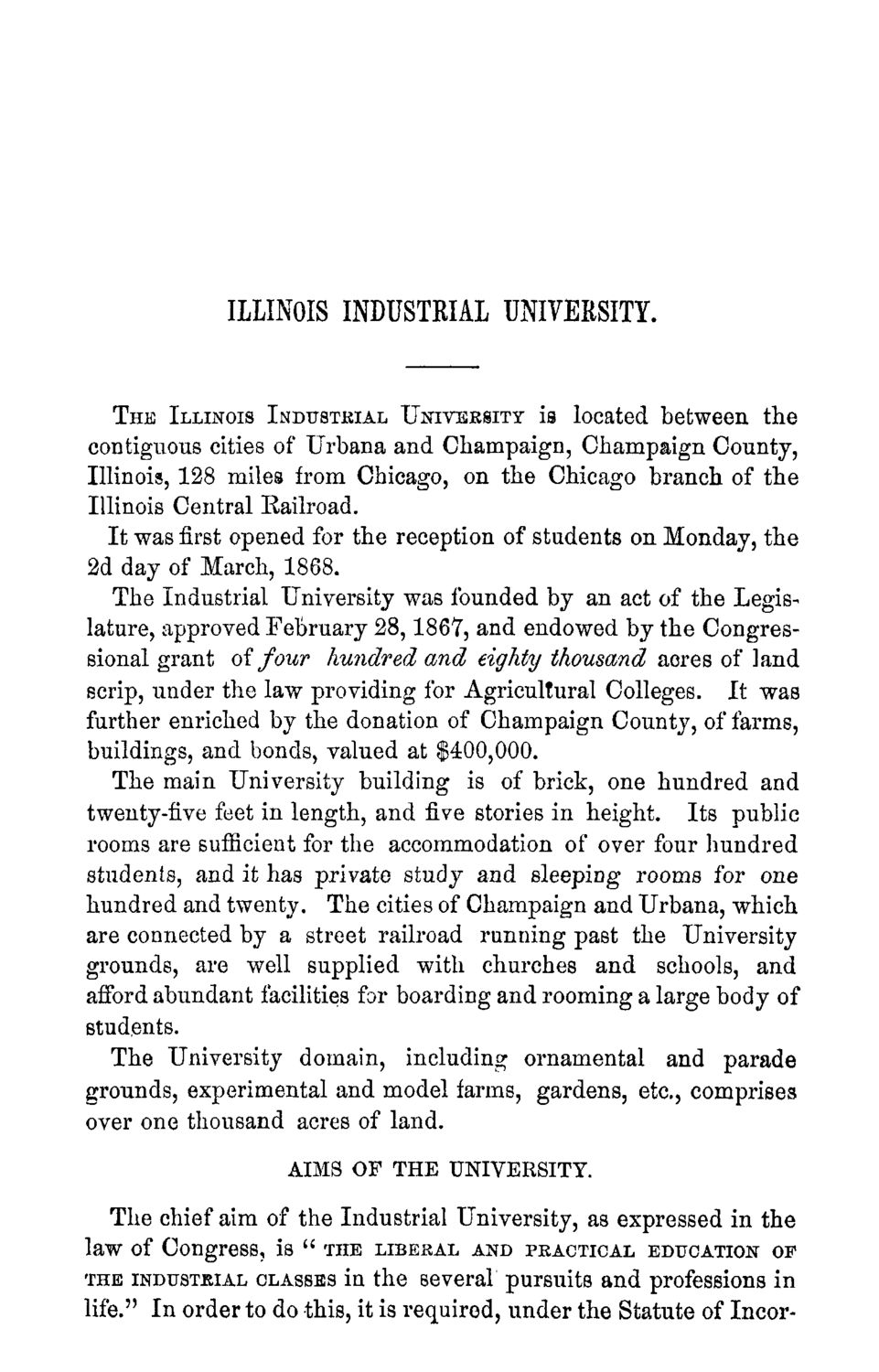| |
| |
Caption: Course Catalog - 1868-1869 VERSION A
This is a reduced-resolution page image for fast online browsing.

EXTRACTED TEXT FROM PAGE:
ILLINOIS INDUSTRIAL UNIVERSITY. THK ILLINOIS INDUSTRIAL UNIVERSITY is located between the contiguous cities of Urbana and Champaign, Champaign County, Illinois, 128 miles from Chicago, on the Chicago branch of the Illinois Central Railroad. It was first opened for the reception of students on Monday, the 2d day of March, 1868. The Industrial University was founded by an act of the Legislature, approved February 28,1867, and endowed by the Congressional grant of four hundred and eighty thousand acres of land scrip, under the law providing for Agricultural Colleges. It was further enriched by the donation of Champaign County, of farms, buildings, and bonds, valued at $400,000. The main University building is of brick, one hundred and twenty-five feet in length, and five stories in height. Its public rooms are sufficient for the accommodation of over four hundred students, and it has private study and sleeping rooms for one hundred and twenty. The cities of Champaign and Urbana, which are connected by a street railroad running past the University grounds, are well supplied with churches and schools, and afford abundant facilities for boarding and rooming a large body of students. The University domain, including ornamental and parade grounds, experimental and model farms, gardens, etc., comprises over one thousand acres of land. AIMS OF THE UNIVERSITY. The chief aim of the Industrial University, as expressed in the law of Congress, is " THE LIBERAL AND PRACTICAL EDUCATION OF THE INDUSTRIAL CLASSHS in the several pursuits and professions in life." In order to do this, it is required, under the Statute of Incor-
| |